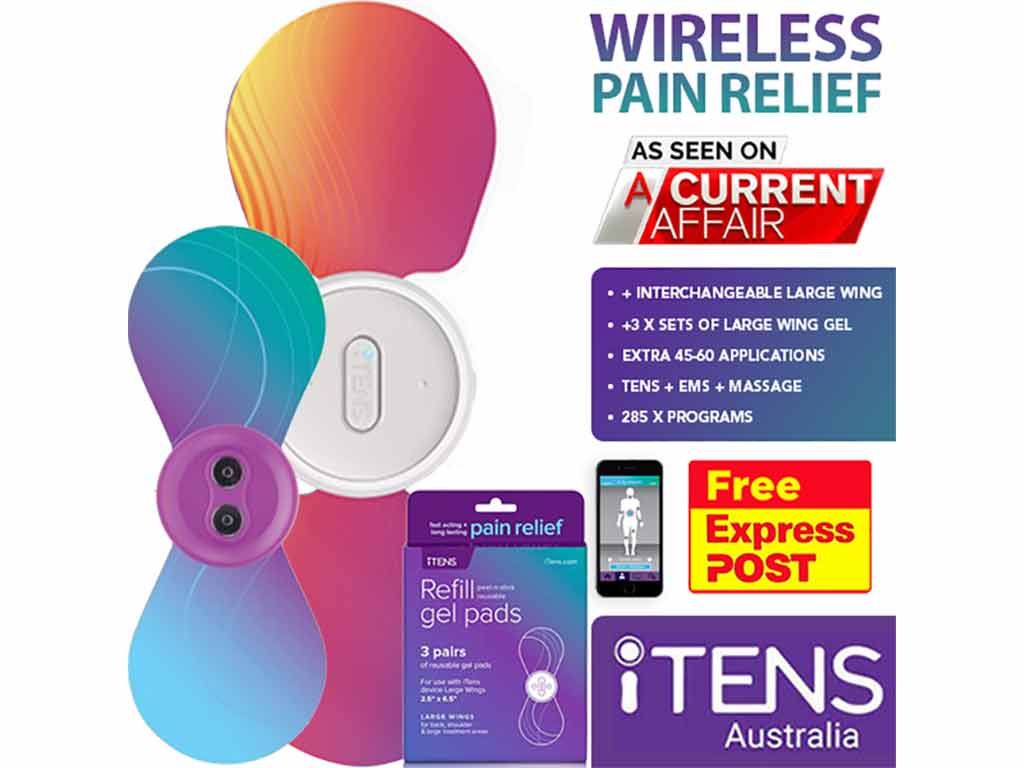
Transcutaneous Electrical Nerve Stimulation (TENS) is an effective treatment that uses an electronic device to send electrical currents to specific body areas. This TENS electrotherapy treatment works by blocking the transmission of pain signals to the brain. Additionally, the electrical pulses can stimulate the production of endorphins and improve blood circulation. Furthermore, it is easy to conduct the therapy. Start by placing the electrode patches. Then, turn on the device and adjust the settings.
Painful conditions affect millions of people worldwide. This often leads to decreased quality of life and limited mobility. Traditional pain management methods, such as physical therapy, medication, and surgery, may not always provide the desired results. Hence, individuals seek a more effective pain relief solution. One promising approach is the use of TENS pain relief devices. This article will present the TENS electrical stimulation, including how it works and how to conduct it.
What is TENS Electrotherapy?
TENS electrotherapy is a natural method of pain relief. It utilises a battery-operated electrical device to deliver electric currents to the body via electrodes placed on the skin. Physical therapists, pain clinics, and healthcare professionals commonly use TENS therapy to assist in the treatment of various types of conditions. Additionally, individuals experiencing discomfort can employ TENS as a self-management tool.
TENS devices are available in both wired and wireless configurations. Wired TENS units are equipped with electrode pads connected to the central machine via wires. On the other hand, wireless TENS units eliminate the need for lead cables. Hence, it provides greater freedom of movement during use. Nevertheless, individuals can control the therapy manually or on a smartphone via Bluetooth.
Moreover, the most common features of TENS units include adjustable settings, various electric stimulation modes, and pre-set programs. Some devices may also offer rechargeable batteries, digital displays, and user-friendly interfaces. Furthermore, individuals can purchase TENS devices in the marketplace. It is available in physical and online stores.
Treatable Conditions
- Acute pain conditions: it is a sudden discomfort. This may result from injuries, postoperative pain, labour pain, and primary dysmenorrhea.
- Chronic pain: it is persistent and long-lasting. Conditions such as arthritis pain, fibromyalgia, and backaches fall into this category.
- Neuropathic pain: this results from damage or dysfunction of the nervous system. Conditions such as diabetic neuropathy, phantom pain, and nerve compression injuries can cause neuropathic ailments.
- Musculoskeletal pain: it affects the bones, ligaments, and tendons. This may include joint pain and knee osteoarthritis pain.
- Muscular pain: refers to the discomfort originating from the muscles. This could be due to overuse, tension, or injury.

How TENS Electrotherapy Works
TENS electrotherapy works by employing electrical pulses to modulate the pain perception of the body through several analgesic mechanisms. When TENS therapy is applied, the electrical currents can stimulate the nerve fibres, prompting the release of endorphins. These bind to opioid receptors in the brain and spinal cord. Hence, this reduces pain sensation and induces a sense of well-being.
Another important aspect is the pain gate mechanism. According to this, the electrical impulses from TENS can travel to the spinal cord faster than the pain messages. Therefore, it can close the “pain gate” and prevent the brain from receiving pain signals. Nevertheless, this mechanism essentially “blocks” the transmission of pain signals to the brain, reducing the perception of discomfort.
TENS therapy can also promote increased blood flow to the targeted area. The electrical stimulation causes vasodilation, which is the widening of blood vessels. Improved blood circulation can help reduce inflammation and promote the delivery of oxygen and nutrients to the body tissues. Additionally, the electrical currents from TENS can stream in low and high frequencies.
Benefits of TENS Therapy
TENS can deliver targeted relief. Individuals can focus the treatment on the exact location of the discomfort, providing localised relief. Additionally, TENS therapy offers a non-invasive and drug-free solution. It does not involve medications or invasive procedures to provide relief. Also, TENS units are highly customisable. People can adjust the frequency, intensity, and duration of electrical pulses.
Cost-effectiveness is another benefit of TENS. It can provide long-term pain management without the ongoing costs of medications or invasive procedures. Moreover, many TENS units are portable as they are compact and lightweight. This allows individuals to use it at home or on the go.

How to Conduct TENS Electrotherapy
To conduct TENS electrotherapy, it is essential to follow specific steps. Before beginning the therapy, ensure the skin in the targeted area is clean and dry. Then, position the electrode patches on the skin. Adhere to the proper electrode placement. Also, do not place the electrode pads on some areas of the body. This includes the head, eyes, mouth, throat, chest, bony prominences, and broken skin.
Next, connect the electrodes to the unit via wires or on a smartphone via Bluetooth for wireless. Turn on the TENS unit. This may prompt individuals to adjust the settings (frequency, intensity, and duration). Some TENS models may have pre-set programs. Thus, choose the program that targets the specific condition. Begin with the lowest setting and gradually increase it to a comfortable level.
Once the TENS settings are configured, initiate the therapy. Throughout the TENS therapy session, monitoring sensations and taking necessary actions are essential. The duration of the treatment typically lasts 15 to 30 minutes. It is vital to have breaks for longer sessions. Once the therapy is complete, turn off the TENS device and carefully remove the electrode patches.
Signs to See a Medical Professional
If the skin underneath or around the electrode pads develops skin irritation, it is essential to consult a health professional. This can indicate an allergic reaction to the electrode material or improper electrode placement. Furthermore, if the individual experiences an escalation in discomfort during or after therapy, it is vital to seek medical attention. This could indicate a need for reassessment.
Additionally, if an individual experiences persistent numbness, tingling, or unusual sensations, it is necessary to seek medical advice. These sensations may indicate nerve irritation or underlying concerns or issues that require evaluation by a professional.
Conclusion
In conclusion, TENS electrotherapy is a highly effective and beneficial treatment option. It uses a wired or wireless device to deliver electrical currents to the body. Therapists, professionals, and individuals commonly utilise this technique to treat ailments. Furthermore, TENS works by disrupting the transmission of pain signals to the brain. Also, it can trigger the release of endorphins and promote blood flow. Additionally, the electrical currents from TENS can stream in different frequencies (low and high).
With such mechanisms, TENS therapy can treat various conditions. This may include labour pain, arthritis, nerve compression syndromes, osteoarthritis, and muscle discomfort. Moreover, TENS provides numerous benefits. It is non-invasive, drug-free, customisable, cost-effective, portable, and gives targeted relief. Conducting TENS treatment is a straightforward process. Clean the skin, position the electrodes, turn on the device, and adjust the settings. However, knowing the signs when to see a doctor is crucial.




















